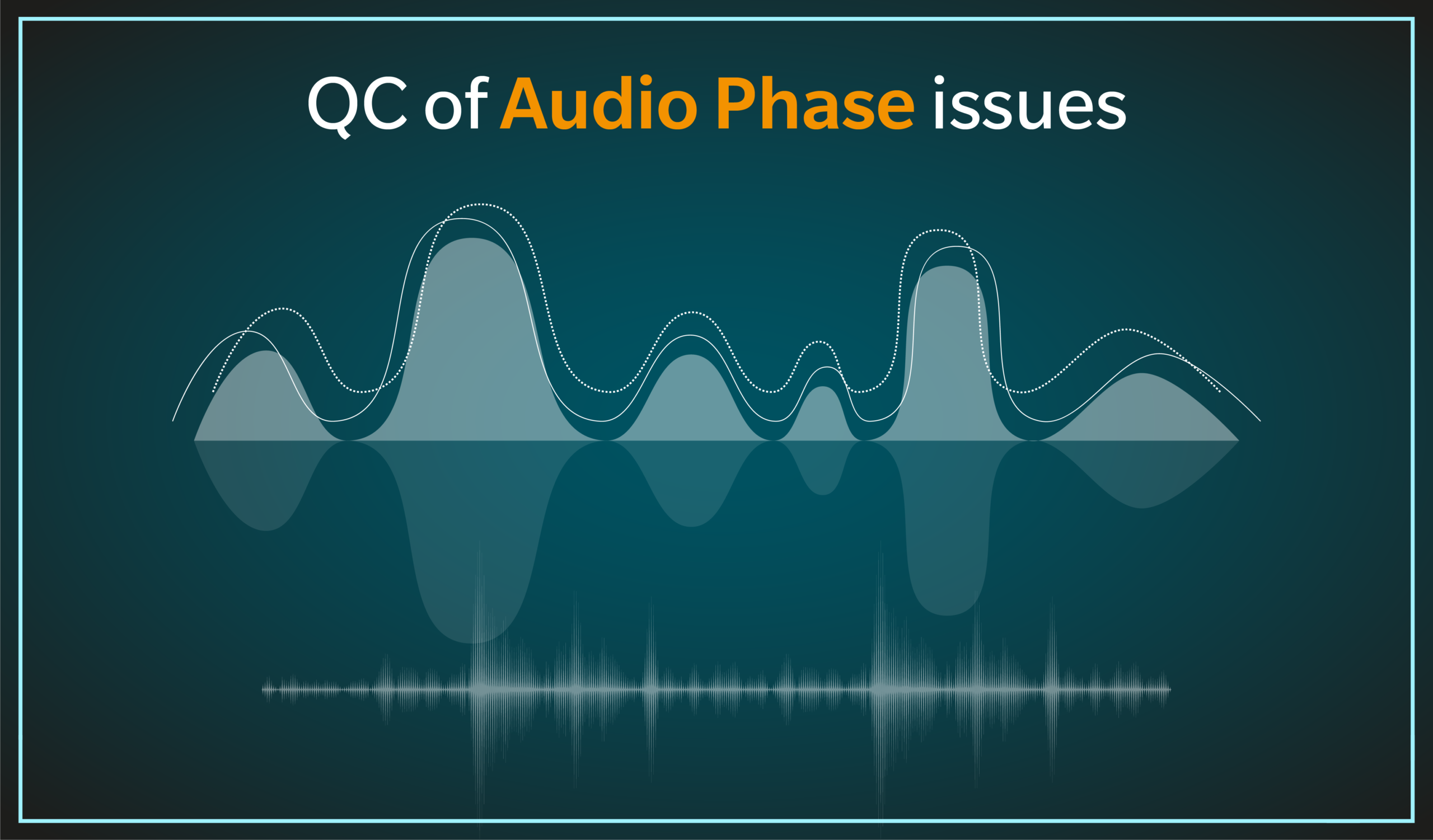
29 Aug Importance of QC of Audio Phase issues
What is Audio Phase?
Audio Phase refers to the timing relationship between multiple sound waves and indicates how these waves align or misalign when interacting. It’s a crucial element in sound reproduction and impacts the overall quality, depth, and clarity of audio. Proper audio phase alignment, which involves synchronizing audio waveforms, is vital for achieving pristine sound reproduction.
In the realm of audio, phase is closely connected to waveforms. When two identical waveforms are perfectly aligned in time, they are termed “in-phase.” Conversely, when they are time-shifted, they are labeled as “out-of-phase.”
When audio waves are in-phase, they reinforce each other, resulting in a stronger and more distinct sound. On the other hand, out-of-phase waves can cancel each other out, leading to reduced volume or even complete silence in extreme cases.
The implications of audio phase extend beyond volume changes, affecting the tonal balance and spatial characteristics of sound.
How do Audio Phase issues arise?
In setups with multiple speakers, like surround sound systems or live sound reinforcement, audio phase issues can arise due to differences in listener-speaker distances. These variations in path length introduce time delays, causing sound waves to be out of sync and resulting in phase cancellations.
Audio effects such as delay, reverb, and chorus can introduce phase disparities. Mishandling these effects can lead to unintended phase cancellations or artifacts. Additionally, a room’s acoustic properties significantly influence audio phase. Sound reflections, diffractions, and resonances can trigger phase cancellations or reinforcements at various frequencies, leading to uneven and colored sound reproduction.
Implications of Audio Phase misalignment
When audio phase misalignment occurs, the consequences can range from subtle to significant. At best, it leads to diminished sonic clarity and depth. At worst, it causes audible artifacts like comb filtering, where specific frequencies are nullified, resulting in an unnatural and hollow sound.
In music production and mixing, phase problems can blur focus and definition in the mix. Instruments lose their distinctiveness, and the overall sound becomes muddy. In live sound reinforcement, phase cancellations can create dead spots in the audience area, causing certain frequencies to be attenuated or absent.
Manual QC of Audio Phase issues
Detecting phase issues in audio signals is a precise and meticulous task in audio engineering. The interplay of frequencies and timing makes identifying problems like phase cancellations, inversions, and misalignments challenging. While manual detection has been conventional, it has limitations that impede efficiency and accuracy, including:
- Subjectivity: Manual analysis is prone to subjectivity and listener fatigue, leading to inconsistent and unreliable results.
- Time Consumption: Scanning content manually for audio phase differences is time-consuming and slows down production workflows.
- Human Oversight: The intricacies of phase problems make them prone to human oversight, resulting in undetected issues surfacing later in production.
How does Automated Audio Phase Detection Help?
Incorporating automated audio phase detection using cutting-edge QC tools mitigates the above issues. These tools utilize advanced algorithms to analyze audio signal phase problems, offering features such as phase coherence measurements, phase cancellation and inversion detection, and misalignment detection.
They provide objective and consistent analysis, reducing subjectivity and ensuring accurate phase issue detection. Automated detection significantly speeds up analysis time, allowing swift identification of phase problems across extensive audio datasets.
Venera’s PulsarTM and Quasar® A/V Content QC solutions offer an automated way to identify audio phase mismatches. These tools grant flexibility to specify channel, phase angle, frequency range, and more, empowering users to tackle audio phase issues. With the comprehensive reporting capabilities of Pulsar and Quasar, recognizing audio signal phase problems becomes effortless.
For instance, a 180-degree phase difference between two simultaneous audio channels constitutes a ‘phase inversion’. Here’s an example of how Venera’s QC solutions can detect such phase inversion issues:
To wrap up
Audio phase is a complex and intricate phenomenon that plays a pivotal role in sound reproduction. Understanding the causes of a phase mismatch in audio is essential for audio engineers, producers, and enthusiasts alike. Careful consideration of speaker placement, microphone techniques, signal processing, and quality control mechanisms can help mitigate phase issues and ensure accurate and pleasing sound reproduction.
Since audio phase issues might not be apparent to an operator, it is necessary to use an Automated File based QC system such as Venera Technologies’ Pulsar and Quasar, to check for any audio phase issues. These QC systems offer detailed reports containing precise information to address these concerns effectively.


